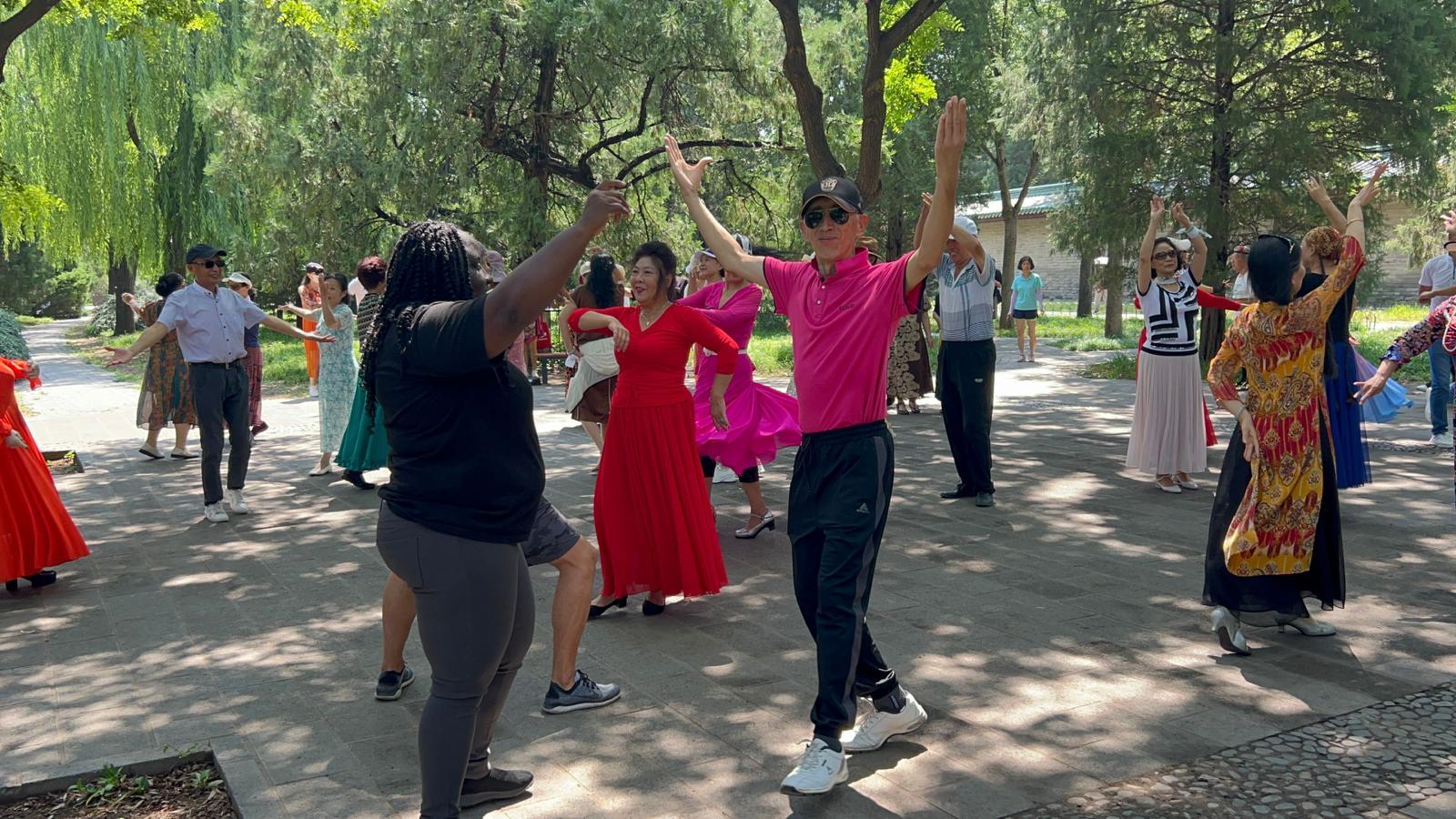Elderly Chinese Gather for Exercise and Socializing During Daylight Hours: Insights from a Visit to China

Discover the vibrant exercise and socializing culture of elderly Chinese citizens. Learn about China's elderly care policy plans and the creation of recreational spaces for older individuals.
At any given time during daylight hours, elderly Chinese gather in large groups to exercise and socialise.
It was one of my thought-provoking discoveries during my visit last month to the East Asian nation where life expectancy is 77.47 years.
At almost every place of interest, delegates of the Seminar for National Press Officers and Journalists from Belt and Road Countries, who were in Beijing from July 12 to July 25, witnessed scores of senior citizens working up a sweat.
No matter their physical structure or gender, many of them engaged in a variety of exercise routines – some simple, others testing their mental and physical strength. Others engaged in dance sessions, sang or played musical instruments.
The game Ti Zian Ji, during which players use their feet instead of racquets to hit a shuttlecock, appeared to be a favourite. According to unofficial reports, some Chinese would spend hours playing the game.
But whatever they were doing, these seniors all looked stress-free and relaxed.
It was explained to the 14 delegates that China’s elderly care policy plans request local governments to set up facilities for senior education and leisure, including parks, green spaces, and sporting facilities.
Some of us remarked that we would love to see similar spaces being created for elderly citizens in our own countries.
It made me think that even though the elderly in Barbados flock to the beaches for water therapy and exercise, local authorities could perhaps follow China’s lead and develop additional safe recreational spaces across the island for older folk.
While on a visit to the Temple of Heaven, some of us joined in a dancing session in the recreational area there.
The Temple of Heaven is the place where the emperors of the Ming and Qing dynasties “worshipped the heaven” and “prayed for the good harvest”.
Tour guide Lili Yang said that almost every day, retirees visit the location, which is also used as a public park, to exercise.
“We have a lot of public parks in Beijing provided by the local government and they are open to retired people to go for morning and evening exercise. We have a lot of retired people, so going to the parks is a kind of social life for Chinese local elderly people,” Yang said.
“They dance and they play musical instruments and they do all kinds of activities that help them to entertain themselves. Whether they are dancing, singing or exercising, you can see on their faces that they are very happy with what they are doing. The retired people are very happy that they have these parks where they can go.”
Another highlight of the two-week seminar was the visit to the Yunnan Ethnic Village, located on the south side of Kunming.
The village is one of the most popular tourist attractions in the Yunnan province’s capital and largest.
Ethnic minority villages, including those of the Dai, Bai and Yi people, have their own folk customs and craft performances.
During minority festivals such as the Songkran Festival in April and the Torch Festival in July and August, the ethnic village also hosts lively celebrations which thousands travel from far and near to see.
Tomorrow, we bring the final installment of Anesta Meets China, a five-part series about the experience of Barbados TODAY journalist Anesta Henry in China.


